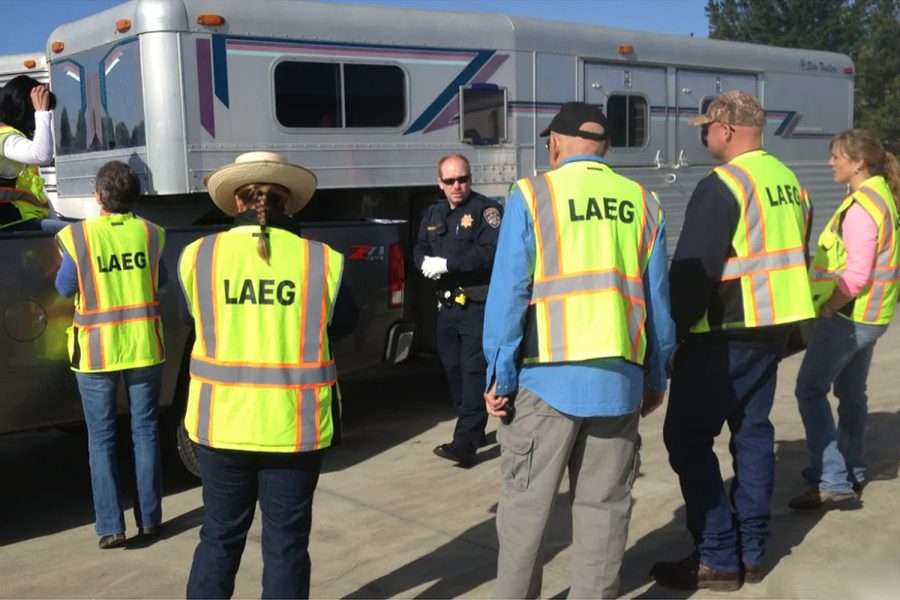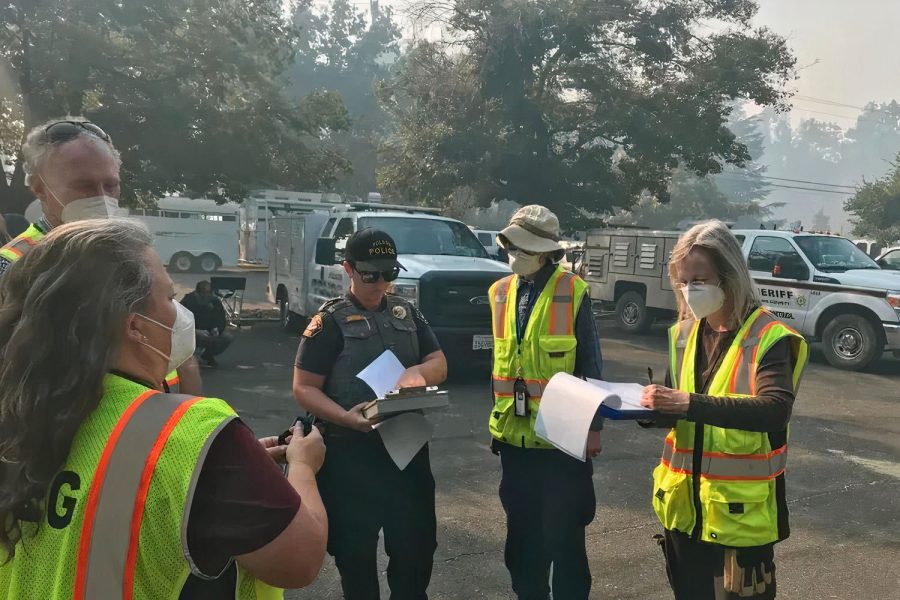Every year, millions of farm animals die due to natural disasters. Floods, extreme temperatures, wildfires, and other events present grave risks to animals, especially those in confinement.
However, many owners don’t take much action to protect their animals because of the sudden nature of these events and the lack of incentive for disaster planning.
According to an Animal Welfare Institute (AWI) report, nearly 6.5 million farm animals have died in barn fires since 2013.
In order to combat these realities, the San Mateo County Large Animal Evacuation Group (SMCLAEG) is working to provide evacuation services and shelter for large and farm animals in the event of a disaster.
These efforts include the evacuation of animals, caring for the animals in holding areas after evacuation, and facilitating the return of animals to their owner or agent. It is activated by first responders and is staffed by SMCLAEG’s core team members and volunteers.
“Believe it or not, there are a lot of large animals — horses, cattle, pigs, sheep, goats, llamas, a camel, and more — in San Mateo County that need assistance in times of emergency. We try to do a lot of community outreach to be of service in helping owners prepare for emergencies,” said Kelly Archer, board member and treasurer of SMCLAEG.
The group holds monthly training events such as those involving animal handling, drills, trailer training classes, cardiopulmonary resuscitation (CPR), ham radio training, equine emergency triage events, and emergency preparedness events.
Once a year, there is an “all-in” drill for volunteer practice. For one or two days, the group pretends that there is a disaster, and all of the members come together to move animals and sharpen their skills.
“We’re always looking for new members, and they don’t need to have animal handling experience,” said Lori Morton-Feazell, a SMCLAEG board member and chief of animal control and licensing in San Mateo County. “We need people that can do computer work and people to talk to others on the phone who can organize supplies. We need people that can drive pilot cars and operate radios. So we need all types of skills.”
The group has been around since 2008 and first started after a fire in Santa Cruz occurred. Those wanting to offer evacuation help with trailers could not cross the fire lines because they were not certified or trained to evacuate animals.
Following this event, those who had wanted to help began to ask questions and discovered that San Mateo County did not have a process of its own for evacuating large animals.
Soon, a group was formed in order to help these animals in the county’s future emergencies.
“The group was created basically out of necessity. I run boarding facilities, and if there was an emergency or disaster, I didn’t want to not be able to go in and get those animals out because of not being able to cross the fire line. So we started a training program and an evacuation team,” said SMCLAEG President Robin Camozzi.
In August 2021, SMCLAEG provided mutual aid in El Dorado County for the Caldor Fire.
In response to the CZU Lightning Complex fires of 2020, the group used about 52 trailers and 198 volunteers to move and provide housing, care, and feeding for 1,546 animals. The group racked up over 5,400 volunteer hours in total. It also provided mutual aid to Santa Cruz and Butte County.
“It takes a lot of people that have knowledge of the animals to evacuate them safely,” Morton-Feazell said. “The Peninsula Humane Society is the animal control contract for the county. A lot of times during the disaster, they’re working with dogs and cats and other small animals. This volunteer group helps them because it can take on the large animals. So we need this group in our county. We’re very lucky to have this group because not every county has a group like this.”
According to Morton-Feazell, many people won’t leave during a disaster if their animals aren’t going to be cared for. But SMCLAEG allows people to leave their homes safely, knowing that their animals will be safe as well.
Another significant aspect of the group is the fellowship among its members.
“We are all very tight-knit and do a lot of training together. We have a great sense of trust among ourselves and our teams,” Archer said.
Similarly, Morton-Feazell highlights how the volunteers come from all different walks of life and have a variety of different skills and interests.
“One of my favorite things about the group is getting to know people and how they come together during a disaster to help animals. And our volunteers will jump in and do whatever is needed to get the job done well. If stalls need to be cleaned, they’ll clean them. If animals need to be fed, they’ll feed them. The camaraderie of the group and just getting out and helping the animals together is amazing to see,” Morton-Feazell said.
Since its creation, the dedicated volunteers of SMCLAEG have worked to help thousands of animals, according to Camozzi.
“Many people are unaware of just how many large animals there are in our county. We play a hugely important role in the community,” Camozzi said.













